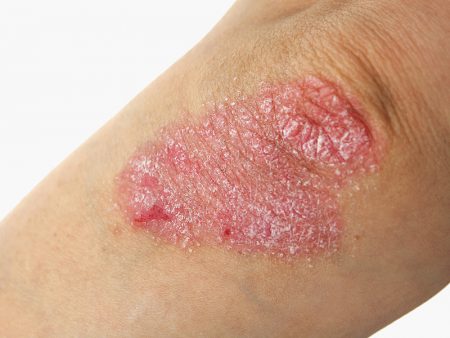
June 7, 2017
Understanding occupational skin disorders


June 7, 2017

Reviewing nearly half a million injury and illness cases involving active members of the U.S. Navy and Marine Corps, Chris Rennix discovered something unexpected: Skin disorders were one of the most prevalent occupational conditions for which military members were being treated.
“I was surprised it was so high,” said Rennix, head of the EpiData Center at the Navy and Marine Corps Public Health Center in Portsmouth, VA, and chair of the American Industrial Hygiene Association’s Occupational Epidemiology Committee. “It’s overlooked from a corporate level because it’s so easy to treat. It’s inexpensive to treat, except for rare allergic reactions. It doesn’t bump the budget that much.”
In fact, skin diseases are the second most common type of occupational illness, according to NIOSH. More than 13 million U.S. workers are estimated to be potentially exposed to chemicals that are absorbed through the skin.
Irritant contact dermatitis, allergic contact dermatitis, skin cancer, infections and injuries are among the types of occupational skin diseases. According to NIOSH, causes of these diseases include:
Chemical agents: Irritants effect the skin through chemical reactions. Repeat exposure to sensitizers can lead to allergic reactions. Physical agents: High or low temperatures and radiation Biological agents: Parasites, plants and animal materials Mechanical trauma: Bruises, cuts and friction
Exposure can occur through splashes, immersion, inhalation or contact with a contaminated surface. Workers in industries such as health care, construction, food service and cosmetology are at risk.
“Essentially, any workplace that involves excessive handwashing, hand hygiene wet work, as well as those who are in contact with chemicals, can lead to occupational skin disorders, so essentially everyone is at risk for it,” said Tallar Chouljian, occupational health and safety specialist with the Canadian Center for Occupational Health and Safety.
Contact allergens include pesticides, herbicides, formaldehyde and nickel. Products such as medicines, preservatives, oils and dyes also may play a part. The chemicals can be absorbed through the skin without the worker realizing it, and could lead to systemic toxicity if they go through the skin and enter the bloodstream, NIOSH states.
Read More at SafetyandHealthMagazine.com